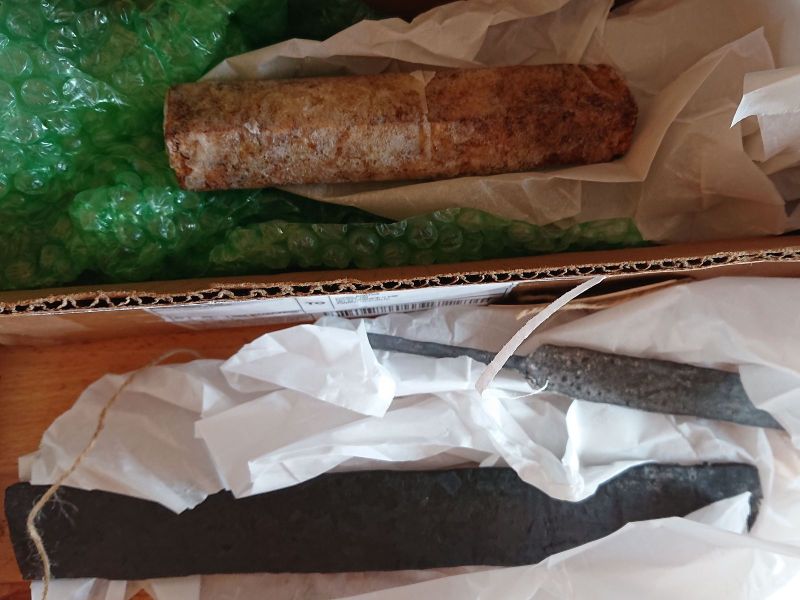Two years ago my father’s oldest brother has died. If you were reading TNET at the time, you may remember that it was very stressful before his death. His house was full of garbage. Literally full – each and every room to the breast height, some more – and literally garbage – wrappings, shopping bags, spoiled food. And mixed in that garbage were occasionally valuable things, like tools or antique furniture.
My uncle was not on good terms with the whole family, except with me. So he wanted to give his property to me, which I have refused unless he allows me to throw his garbage out. I planned then to sell the dump for the price of the land and give the money to my nephew, to compensate him a bit the shitty start of life his good-for-nothing father has caused him.
It was difficult to find a company willing to even touch that mess, and when we found one, it took over a month and cost his whole life savings (nearly 30.000,-€). Unfortunately, he died before the works were finished. So I secured the door, barred the windows and the property hung in the limbo of inheritance legalities ever since. My uncle was childless and did not write a testament, therefore his siblings were his inheritors. And, as I expected, my uncles and aunt were not exactly cooperative.
Not that they wanted money – I would be OK with that, I did not want anything in the first place, not for myself. But they knew it would be cheeky to ask for money after they multiple times said they want nothing to do with their brother when he was alive and sick and in need of help. They just were uncooperative and deliberately obtuse, so the whole legal process took almost two years. Last month it was finally over, with my father now being the sole owner of the property. We already have a buyer, for a good price, so hopefully, before the year’s end, it will be over.
During the two years, people broke into the house – door were kicked in, all windows were broken – and stripped it of nearly everything of even modicum of value that was still left there. Someone even tried and failed to steal a huge central heating oven, but it was evidently too heavy. Nevertheless, there were still some things that I want to take before we sell it all.
One of those things is an old, broken massive wooden cross. My uncle was a fervent catholic and he worked as a sexton in the local church for decades. He probably scrounged this either to repair it or just as junk. But it is good, old, seasoned oak. The big beam is rotten a bit, but it can still be mostly salvaged enough for a plethora of knife handles, or for vice jaws or something.
In the cellar was a huge pile of fire bricks. I am a bit surprised that those were not stolen – they cost 2,-€ each and they are thus more valuable than the huge heating oven. And they would be less work to take. Possibly the scavengers did not recognize what they are and thought those are ordinary building bricks – I do in fact know that one such person who illegally broke into the house mistook them for ordinary bricks.
I am not sure whether I will be able to make something out of them, but I wanted to build a wood-fired ceramic kiln for a long time, and these bricks were enough for just that. But maybe they will just stay in their new place until my heirs have to clean them away.
Another thing(s) I wanted to take – of limited value to anyone but me – were the lilac and elderberry bushes that have overgrown the garden. Lilac wood is extremely hard and durable, extremely rare and extremely beautiful – the heartwood is lilac and the sapwood creamy-white. Elderberry wood is not very durable, but it too is hard, reasonably beautiful and difficult to get in larger pieces. The new owner will fell most of the trees anyway, and they were in bad condition since my uncle did not care for the garden at all, so I need not feel guilty for cutting them down.
So this weekend my nephew – the future recipient of a big pile of money – came by and he helped me to move all those fire bricks, fell most of the lilacs and elderberries, and stack it all behind my workshop. I took even some thin lilac twigs, I think I can do something out of them, and if not, my house has a wood-burning stove.
Tomorrow I have to take a can of paint and slather it over all the cuts, otherwise the wood will dry too quickly and crack too much.
My hands are a lot better. The bones ceased to hurt completely, but some ligaments around the pointer finger are still probably strained and begin to hurt after some works, especially after writing – so there alas still won’t be too much writing from me for an undetermined time. I think I will have to actually fixate these fingers for prolonged time, otherwise they just won’t heal.




































